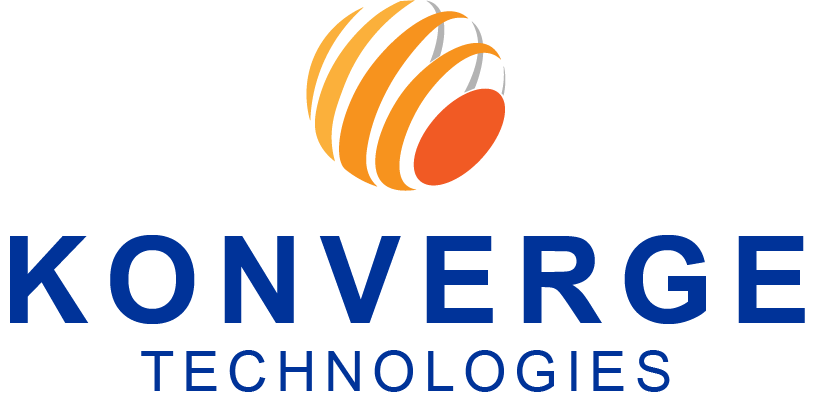
8 critical steps on your RPA journey that will ensure your success

Robotic Process Automation (RPA) is enabling the digital transformation of businesses across the globe. RPA is a technology that makes it possible to build software robots that can emulate human actions such as reading the contents of a screen, perform the correct keystrokes, sift through large volumes of data, extract data, and a varied range of predefined functions—indeed, faster and more consistent than human workers.
RPA helps automate mundane tasks efficiently so that the human workforce can be deployed in more business-critical activities. This, in turn, eliminates the monotony in work that may ultimately cause employee burnout and reduced motivation. Optimization of work using RPA tools has proven to increase employee engagement, productivity, and, as a result, higher employee satisfaction levels. In testing times such as these, boosting employee morale is critical for business success.
The road to success with RPA implementation is fairly straightforward. This article explores the eight critical steps in RPA implementation, which when correctly handled can help you achieve the optimum digital transformation of your business and significantly improve your revenue. One of the examples of benefits of RPA we can see in the Banking industry where implementation of RPA and AI in Banking Industry is playing a major role in its transformation.
1. The Research
Before embarking on a journey of RPA implementation for your organization, thorough research is needed to assess the need for RPA in your organization and your readiness to adopt it across your various business functions. Talk to your friends in your industry who have already implemented RPA in their businesses. Observe and understand the various experiences of businesses similar to yours in their RPA adventure.
Observe the latest trends and tools and assess how they might impact your business when adopted. Involve the key segments of your business, especially HR, as RPA has a significant impact on how your workforce’s approach towards work. The HR team can help you identify training needs and team optimization requirements.
Taking into account the inputs from various sources, draw up a vision describing the changes in your organization after RPA implementation.
2. Preparing your organization for RPA
Once you have a clear understanding of how RPA will transform your organization, it is time for beginning the practical implementation. The best point to start with is to identify proper resources for such implementation. Choose a suitable RPA sponsor from your senior management team, who has budgeting authorization. Then select an RPA Champion who can influence and coordinate leaders of various business verticals and bring them into the fold of RPA implementation. This person must be a strong influencer and an efficient troubleshooter.
Now comes the identification of the right business process for RPA pilot implementation. Choose a business process that has high value. This will help understand the practical challenges on the ground level.
It is equally important in this stage to clearly define the success criteria, i.e., what you want to achieve through RPA implementation in terms of productivity improvement, cost savings, customer satisfaction, employee satisfaction, etc.
3. Choosing the Right Robotic Process Automation Vendor
The success of RPA implementation in your business is highly influenced by the capabilities of your RPA vendor. When selecting the right vendor, do exhaustive research on the available options, see how the vendors’ robotic process automation solutions and services align with your long term goals (see the importance of having clearly defined success criteria?), and study the proven experience of the vendor in the successful implementation of RPA in similar businesses.
Since RPA software has access to your sensitive data and systems, ensure that the security of the solution offered by your vendor is strong. Also, ensure that your vendor provides continuous after-sales support.
4. Proof of Concept
A proof of concept can help check the validity of your business case assumptions and to establish evidence that the implementation model is suitable for your organization and that it can be adopted across the various business verticals of your organization. Simply said, PoC gives you the evidence of the gains obtained by RPA implementation.
5. The Pilot Phase
Convinced with the evidence obtained through the PoC, now you start rolling out the RPA implementation within the everyday operation of your business. This pilot will follow the same implementation model that you used in the PoC. Assess the performance of the RPA pilot by comparing it against the success criteria that you defined in Step 2. Also, collect feedback from both internal and external stakeholders. Understand the practical challenges encountered and develop solutions to the same. Work closely with your RPA vendor in addressing any issues encountered during the pilot phase, as it is going to prove fruitful during the organization-wide implementation. Keep all of your business divisions informed about the complete pilot experience and what to expect when it is rolled out completely.
6. Setting Up the RPA CoE
Establish the RPA Center of Excellence, which is essentially your RPA-A team, both in the professional and the technological spheres. This will be the hub for RPA implementation across your organization. The RPA CoE plays a crucial role in scaling up the RPA implementation across the organization.
7. Scaling Up
After tasting success with the Pilot phase and having set up the CoE, it’s the perfect time to expand the RPA implementation across the organization. The CoE will play a significant role here in identifying the processes for automation, define the success criteria, and optimize the digital workforce in close collaboration with the IT team. The CoE also sets up the organization-wide best practices concerning the RPA implementation.
8. Adopting RPA as your Culture
Now, you have successfully implemented RPA across your organization and started to see the results. An increasing number of processes are automated and steadily RPA has become a part of your organizational DNA. Now it has become the culture of your company. The employee engagement and motivation levels are high. RPA has elevated the human working experience and has made possible a high level of technological augmentation and business transformation. Now the key task is to keep exploring new processes to automate and to ensure that the culture is embraced at all levels of the organization.
We hope that the blog helped you to understand the process of successful implementation and adoption of RPA in your organization.
Do you want to improve your profitability by adopting RPA across your organization?
Looking for a trusted RPA partner with established credentials? Look no further and contact us for further details.
Check out our latest Tech blog on Intelligent Automation, cybersecurity and cloud computing solutions as follows
Best IT Managed Service Providers in India: 2021
What is Cloud Computing? Know it all about Cloud Computing and services
6 Common Types of Cyber Physical Attacks



